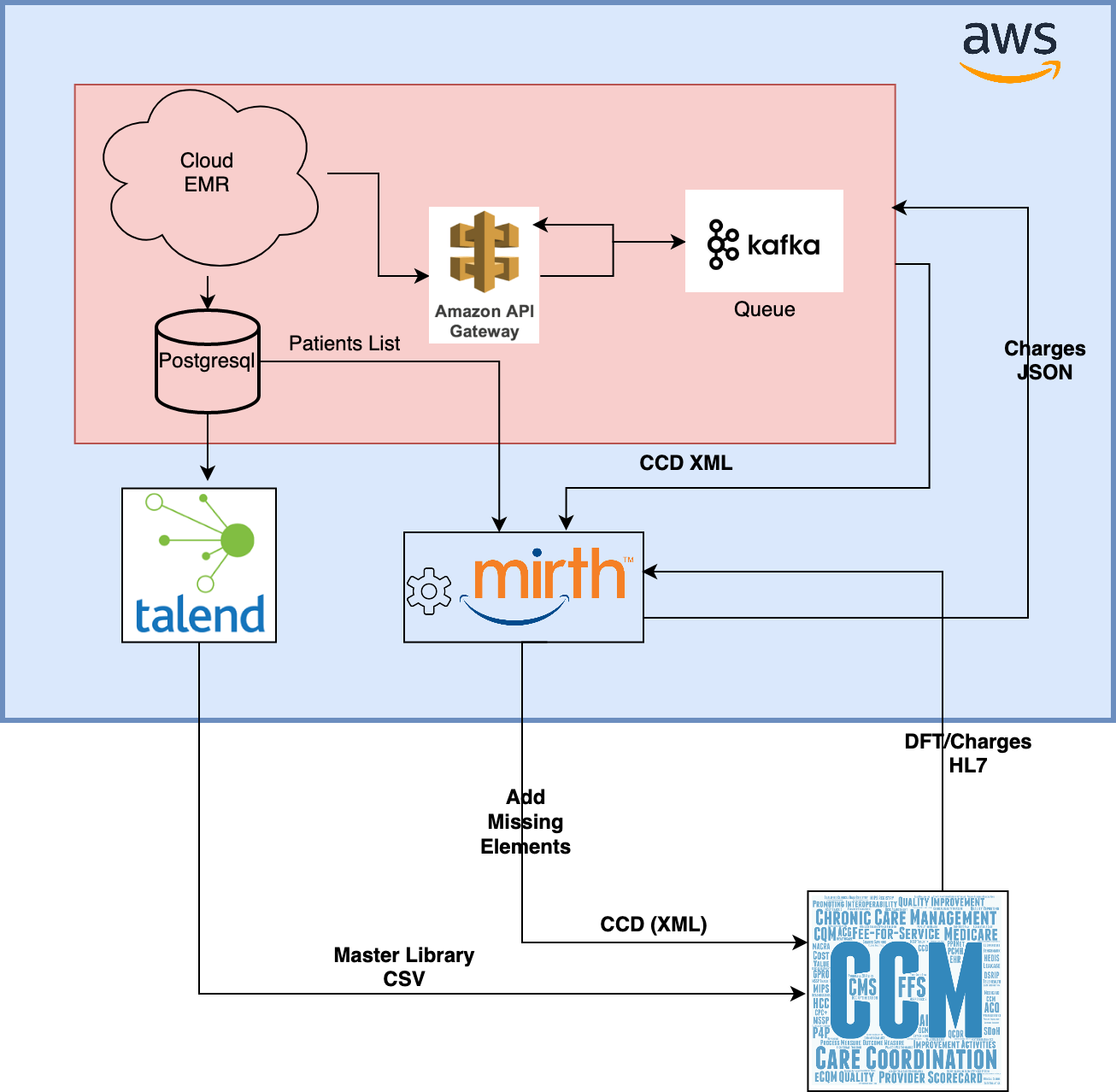One of the Healthcare technology company in USA is associated with KPi-Tech to ensure seamless care to chronic patients.
Business Vertical:
Healthcare Technology
Region:
USA
Main Challenge:
Integration
Overview
Business Need
The Chronic Care Management (CCM) department in a hospital needed to generate Continuity of Care Documents (CCDs) with additional patient information at custom events to ensure seamless care for chronic patients. However, the standard CCD generated by the Electronic Health Record (EHR) system was missing critical data elements, such as Insurance Priority, Order, Encounter Date of Visit, Visitor Name, Reason for Visit, Physician Last Name and First Name, Patient Status, Date of Death, etc. The hospital required CCDs to be generated in batch for a given day when there were updates to patient demographics, problem list, medications, physicians and insurance plan information, visits/encounters. CCM would develop care plans for the patients based on the information received and transmit charges (DFT) back to the Cloud-based EMR application.
Challenges
The hospital faced several challenges in achieving its business objective:
- The standard CCD generated by the EHR system did not include critical patient information.
- The Cloud based EMR has standard triggers for CCD documents, which did not align with the hospital's requirements.
- The CCM application required a master library integration to recognize providers and locations, and DFT inbound for charges.
Solution
KPi-Tech developed an Interface ecosystem to address these challenges and achieve the hospital's business objective. We utilized tools such as Talend, JavaScript readers to build custom CCDs, Kafka for message queueing, and AWS API Gateway for secure APIs. Our solution included the following steps:
- We created a custom CCD document that included the missing data elements and sent it to the CCM application. This ensured that the care navigators had all the critical patient information required to create care plans.
- We used a Talend Job to send the master library to the CCM application, which consisted of provider information. This enabled the CCM application to recognize providers and locations accurately.

Technology Stack
Mirth Interface Engine, Javascript, Talend, Kafka
Result
Our technology-driven workflows enabled the care navigators to drive greater clinical insights into interventions on behalf of their physician partners. The customized CCDs with critical patient information helped the care navigators positively, directly, and deeply impact the lives of patients and those who care for them. These clinical insights helped patients achieve life-changing results every day. The hospital achieved its business objective of seamless care for chronic patients, thanks to our Interface ecosystem. The solution was highly scalable and ensured uptime, thus meeting the hospital's requirements for scalability and uptime.
Discover how optimizing the integration and efficiencies of your EMR system can lead to cost savings for your organization.

